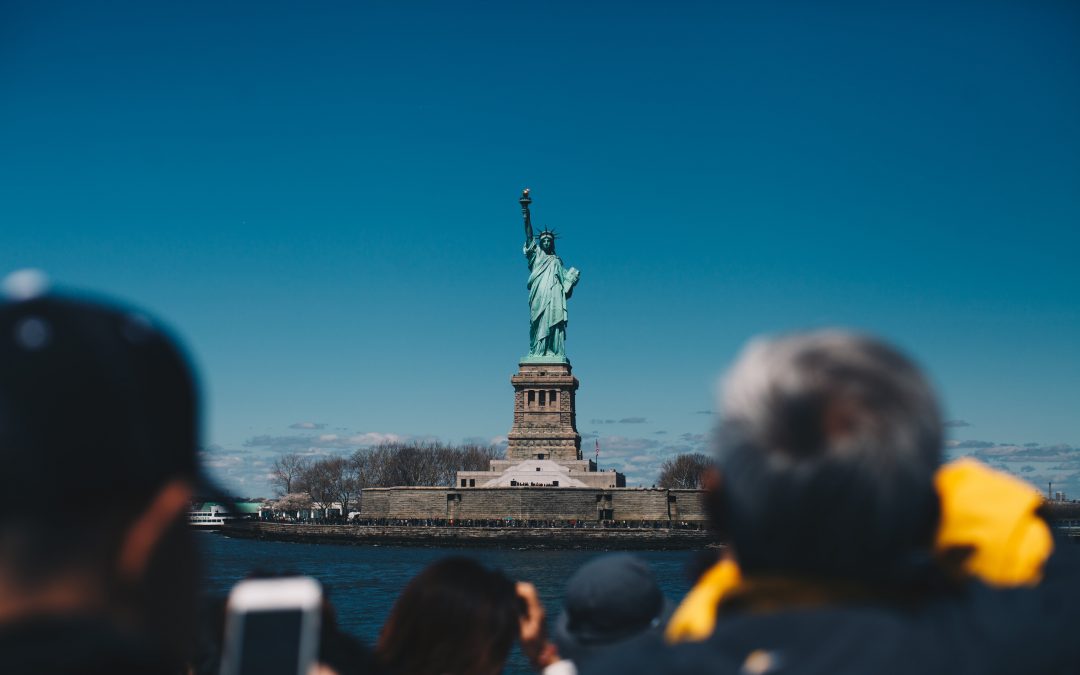
by BCB Property Management | Nov 14, 2016 | History, New York City
After a contentious presidential election in which immigration policy was, and remains, a crucial issue, Americans might consider their roots as a country of immigrants. As illustrated by this colorful animation, the United States has welcomed and (gradually) integrated a rainbow of people. Ellis Island began processing European immigrants as early as 1855, though the post did not fall under federal jurisdiction until 1892. Immigration slowed in the early 20th century due to the upheaval of the first world war, as well as new laws regulating and restricting immigration—an early taste of globalization. Until 1954, Ellis Island served as the portal for so many to this new world of opportunity. And their first stop was New York City.
New York is recognized as one of the most dense and expensive cities in the world, so how did all these newcomers get their start? How did they find the room and resources to settle in a teeming metropolis? As admirably documented and even reconstructed by New York’s own Tenement Museum, early immigrants lived in incredibly crowded conditions and worked hard to make ends meet. Modern day New Yorkers might scoff: How much more crowded can it get? The answer is very. Back then, tenants far exceeded the maximum occupancy requirements enforced today, and the overcrowding resulted in slum-like conditions.
Immigrants tended to settle into tightly-packed ethnic enclaves. These silos easily became self-sufficient, if situationally segregated, as described in the recently released City of Dreams by Tyler Anbinder. The New York Times book review summarizes nicely: “The social benefits of the immigrant enclave were immense, especially at a time when governments didn’t provide much in the way of garbage collection — roving pigs were about the best slum dwellers could expect until later in the 19th century — much less social services. […] Immigrant civic groups sprang up to meet every sort of need from the medical to the recreational to the spiritual.”
So New York City’s neighborhoods and culture were greatly shaped by these immigrant populations, giving us the Little Italy and Chinatown we know today. And the city’s current immigration stance recognizes its roots. Since 2014 the city has more than doubled its budget for immigrant services, like legal representation, and aims to integrate documented and undocumented alike with programs like IDNYC.
The experience of today’s immigrants is very different from that of 19th century immigrants: globalization has smoothed over many transitional difficulties and barriers. For those who settle here—perhaps after a roundabout journey and certainly with some degree of struggle and sacrifice—buying property can be symbolically powerful: a sign that they have arrived, they belong, and they own a piece of the American Dream. Although travel and language are not the obstacles they once were, institutions can still stand in the way of this transaction. Credit histories, international accounts, the intricacies of loans and mortgages, and the nuances of a real estate translated across a language barrier considerably complicate the process. And any New Yorker will readily tell you that the city’s uber-attractive real estate market is unlike anywhere else, with complex rules, interviews, appointments, fees, and paperwork to boot. The applied simmer of competition—with supply greatly outweighing demand—turns this all into a fine stew. Not to mention the ever-rising value of New York real estate.
An interesting and relatively recent federal program (1990) rewards foreign investment in American real estate with green cards. This program has a certain irony, since owning real estate would have been a challenge for immigrants in the past, but now investing from abroad affords investors the opportunity to live in the states. The EB-5 federal visa program gives legal residency to investors (and their dependents) who infuse half a million to a million upfront in real estate development deals.
This program has become increasingly popular since the market crashed and housing bubble burst. Loans are now harder to come by, so developers looked outward. Many large real estate projects in New York—Hudson Yards, Pacific Park, International Gem Tower, and the New York wheel—use a model reliant on foreign investment, since investors will accept lower interest rates with the added visa incentive. So to invite people abroad to invest in US real estate before they even arrive, and often independent of their eventual domestic residence, is the new and preferred method of immigration, particularly for the Chinese. This article by The Real Deal magazine is an in-depth look at the impact of this new wave of Chinese immigrants on the existing tenants of Chinatown and other areas of New York City real estate investment.
For an idea of what New York City real estate looked like to immigrants in the late 1800s, check out King’s handbook of New York City by Moses King, How the Other Half Lives by Jacob Riis, and take a tour of the Tenement Museum. Though it won’t stop New Yorkers from complaining about square footage, it will certainly put things in perspective, including the national debate on immigration.
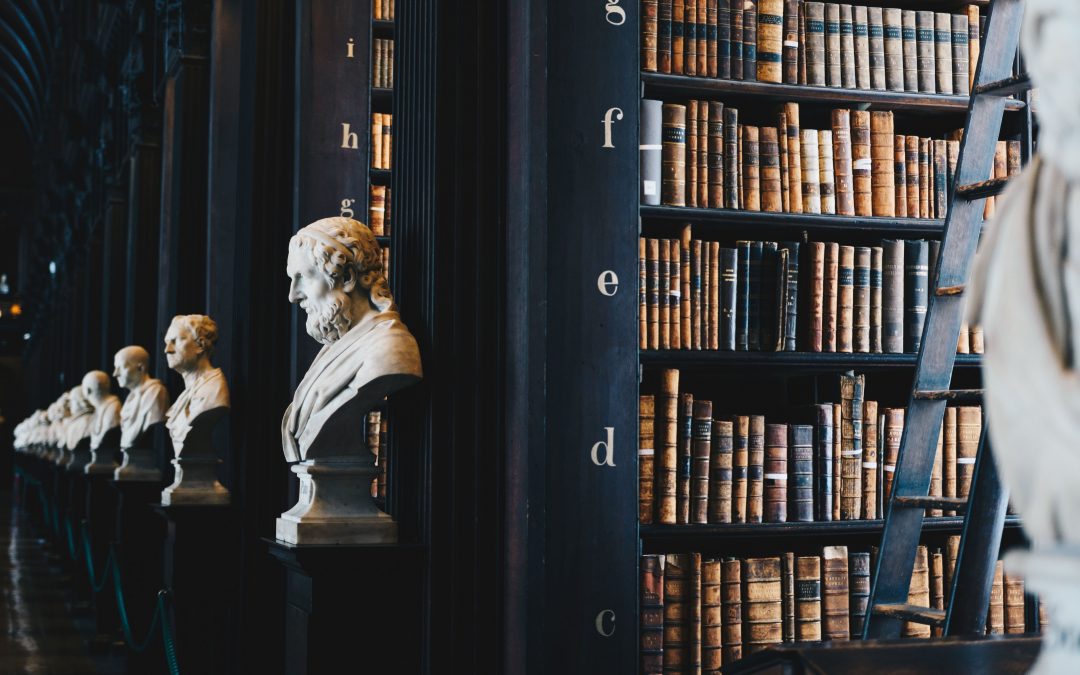
by BCB Property Management | Oct 5, 2016 | History, New York City
If you leave New York City for any length of time, you will return to find it familiar and yet endlessly adapted–ruthlessly updated. In the city that never sleeps, that is both timeless and modern, that changes constantly and yet stands eternal, history takes on a special dimension that doesn’t take up any extra square footage.
In an admirable effort, residents and organizations have documented the rich history behind the myth and legend of New York City. Here are eight experts you should follow to keep up with the evolution.
Imagine your apartment building–perfectly preserved and inoculated by time–has reopened by historians. 70 years later, it can now toured by curious visitors. In viewing your perfectly preserved or restored apartment, they try to understand what life was like at this point in history: what has changed and what has stayed the same in this ephemeral city.
Touring other people’s apartments fulfills deep-seated voyeuristic tendencies inherent to New Yorkers, to whom space is a precious commodity. Touring a fellow New Yorker’s apartment removed by the span of several dozen years and a handful of generations is now a unique educational treat, courtesy of the Tenement Museum.
On a mission to document the immigrant experience and New York City’s tenement communities, historian and social activist Ruth Abram and Tenement Museum co-founder Anita Jacobson stumbled across a time capsule at 97 Orchard Street. Just one building on a block of many housed nearly 7000 working class immigrants during its lifespan. Operating from 1863 to 1935, tenants were subsequently evicted and the higher floors shuttered, due to a building code upgrade that never happened.
Discovered in this condition in 1988 and re-opened in 1992, the Tenement Museum in the Lower East Side is a fascinating and ever-expanding look into the history of the city, through the eyes of the people who fundamentally shaped it. It documents the struggle and magnifies the story of a movement in microcosm. Perhaps most fascinating for its focus on history through people and stories, the Tenement Museum is very much a living history.
The popular Bowery Boys have recorded over 200 podcasts celebrating over 400 years of New York city history.
This feed is a window into the vast knowledge of Levys’ Unique New York: “NY’s First Family of Tour Guides,” who can tailor your New York experience like no other.
This historian-curated feed is chock full of old photos and depictions of New York City, almost impossible to reconcile with the vividly technicolor, larger-than-life smorgasbord we see and hear today.
The Gotham Center, through the Graduate Center at CUNY, works to make New York City history available to the public for study and enrichment, pooling the resources of “professional historians, amateur buffs, museum curators, archivists, librarians, educators, filmmakers, and preservationists.” The Gotham Center was prompted by an award-winning book: Gotham: A History of New York City to 1898. Based on its success, author Mike Wallace established Gotham Center in 2000.
Founded in 1804, the New-York Historical Society showcases a historical collection and culturally-relevant exhibitions about this city’s rich history.
Founded in 1923 and formerly located in the official residence of the New York City Mayor–Gracie Mansion–the Museum of the City of New York features an eclectic and exceptional cross-section of New York City history.
New York Public Library’s Labs are focused on harnessing and optimizing the extensive resources at the library’s disposal for the internet’s edification. This effort has led to projects such as the New York City Space/Time Directory, Stereogranimator, and Building Inspector. Also check out the OldNYC app, which places old NYPL photos of New York on the map, literally.
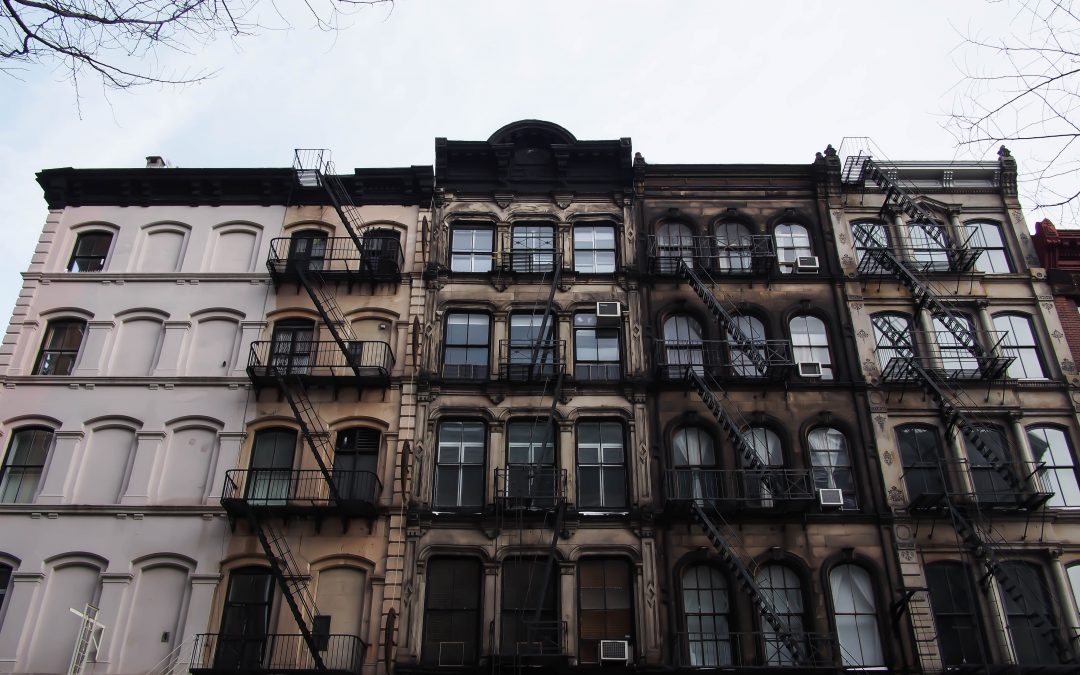
by BCB Property Management | Sep 8, 2016 | History, New York City
For many, it seems that “living the college life” is retaining popularity post-graduation.
Through dormitories, college students gain social experiences and a sense of community: they love having a common area in their living quarters to meet new people, live steps away from restaurants or coffee houses, and can being sociable whenever they choose. These perks aren’t limited to the campus anymore, having carried over into the real world through a living arrangement called coliving.
The lifestyle is a mix between student housing and hotels: a community designed to foster relationships while still maintaining a sense of privacy. It’s an ancient concept that, before physical privacy, thick walls and houses became standard, might have been considered plain old “living.” As recently as the late 80s the concept was adopted from Denmark and is flourishing in the United States today. Shared living spaces are becoming increasingly common in major cities across the country such as Washington, D.C. and San Francisco. The trend is also spreading internationally in Seoul and London.
According to James Scott, COO of London-based coliving developer The Collective, this concept is booming is because many people, Millennials in particular, value experiences over possessions. With rental services for transportation, movies and mobile phones, the generation is trading ownership for experiences. This living arrangement is all about the experiences, making it a great fit for young people.
WeLive’s 110 Wall Street in Manhattan boasts fitness classes, an arcade, cleaning services and potluck dinners included in the rent. There is also a digital social network exclusively for the community that can schedule meetups and events via an app. The community is designed for young professionals constantly on the move and features fully furnished, month-by-month apartments with studio, one- and two-bedroom units.
This lifestyle reflects the changing times, as millennials are constantly on the move from job to job. “The way work is changing,” said Brad Hargreaves, founder of Common, a coliving community with many locations in New York. “It needs to be a little easier for people to move without a traditional 12-month lease.”
In addition, millennials are delaying big milestones, such as purchasing property, to later in their lives; little surprise, seeing as they’re saddled with an average of $26,600 in student loan debt. Combine that with job-hopping and the desire for experiences, and you have the perfect storm for young people to flock to these coliving arrangements.
Although many millennials are accustomed to this living arrangement from college, coliving is not strictly for young people, and not only those who’ve gone to college. Depending on the surrounding environment and the nature of its tenants, some communities, such as WeLive and Common, attract older professionals and entrepreneurs. Other spaces are suited for families, singles, and retirees.
The Market Common in Myrtle Beach, S.C. has a mix of residential and commercial space that attracts families and retirees. The urban village features a variety of shops, entertainment and dining experiences while maintaining a sense of community with its residents. There are walking trails, a central playground and playing fields. A co-living community in Berkeley, California has strictly residential space, but fosters a community with shared meals, carpooling, movie nights and shared parenting life. The proverb “it takes a village to raise a child” accurately describes life in this Berkeley community.
Whether it’s a high-rise complex in the middle of Manhattan or a small community in a suburb, coliving is starting to become the next big trend in real estate. Since we are now all accustomed to spending time by ourselves in front of a screen, maybe it’s time to get out into the world and experience a new lifestyle. One that encourages us to bond with communities could be the panacea to our digital woes and price concerns alike.

by BCB Property Management | Sep 7, 2016 | History, New York City
Every landmark has its secrets, and with one as rich as New York City’s Museum of Modern Art, the stories are almost certainly boundless. While the MoMA’s greatest secrets might always be just that — secret — we’ve rounded up some incredibly obscure and interesting facts about the museum. These tidbits of knowledge, while mostly limited to the minds of curators and tour guides, can help the everyday museum-goer understand the space with new context.
Here are six surprising facts of the Museum of Modern Art that you’d probably never guess at first glance, and how tuning in can enhance your experience.
1. John D. Rockefeller loathed modern art, but the museum was largely founded by his wife Abby.
Rockefeller’s wife Abby Aldrich Rockefeller was largely responsible for the founding of the Museum of Modern Art. You’d think that being the wife of a famously rich man, the job would be an easy one. On the contrary, her husband hated modern art, meaning Abby had to raise the funds without his help.
2. The MoMA is a microcosm of Manhattan itself.
The MoMA has had several homes and various expansions since its opening on 53rd street in 1939. The museum acquired more and more real estate over the years, and in 2002 expanded even further, retaining at its heart its pivotal sculpture garden. What many don’t realize is that the museum reflects the city as a whole.
“The model for MoMA is Manhattan itself,” architect Yoshio Taniguchi told New York magazine for a feature by Alexandra Lang. “The Sculpture Garden is Central Park, and around it is a city with buildings of various functions and purpose. MoMA is a microcosm of Manhattan.”
3. Two of Monet’s “Water Lilies” paintings were destroyed by fire.
One of the MoMA’s most iconic paintings is “Water Lilies” by Monet, positioned in front of a bench for relaxation and contemplation — as was the intent of the painter, who created them while suffering from cataracts as a “refuge of a peaceful meditation.” They were dismissed for many years as the product of a man past his prime.
Then, in 1958, a fire disrupted the art’s tranquility in the museum and destroyed two of the “Water Lilies” painting. The imminently popular triptych on display now was purchased as a replacement from Monet’s son.
4. Before landing at the MoMA, a taxidermied bald eagle caused a host of legal problems.
America’s bald eagle, while a striking symbol, is one not normally physically included in art — largely because it’s a protected species. So when Robert Rauschenberg put a taxidermied eagle in his 1959 masterpiece “Canyon,” it’s fate was relegated to limbo for a while because it was illegal to sell, despite its valuation of $65 million.
The feds agreed to drop the matter so long as “Canyon” be sold where it could be publicly displayed, which is how the work found its home at the MoMa.
5. One artwork, a fur-covered mug, was snuck in years before it was approved
Among the fifth floor painting and sculpture galleries is a fur-covered cup and saucer called Object by Meret Oppenheim. The idea was conceived by the artist while at lunch with Pablo Picasso, who remarked that fur could be put on anything.
This installation has a peculiar history: after debuting in Paris, it was purchased by the MoMA’s director for $50 of his own money in 1936, even though the trustees disagreed with its inclusion. Ten years later the trustees changed their tune; unbeknownst to many it had been in the museum all along labeled as an “extended loan.” Said chief curator Ann Tempkin for TimeOut NY, “It’s one of the great stars of our Surrealism collection; to think that our director had to sneak it in!”
6. A long-term exhibit in MoMA PS1 can only be seen through a floorboard.
The MoMa also has a branch in Queens called PS1, home to more abstract works of art, dubbed “contemporary.” The art of the contemporary is that it’s sometimes easy to mistake for non-art, and often difficult to grasp in meaning.
Some of these hidden gems, like “Selbstlos im Lavabad (Selfless in the Bath of Lava)” by Pipilotti Rist. Peek through a hole in the lobby floor to view the video, which presents the artist crying “I am a worm and you are a flower!” as she swims nude in an incandescent lava bath. Easy to miss, impossible to forget.
7. You can watch videos privately in the media lounge.
On the second floor of the MoMA, there’s a space where you can enjoy art in privacy if you aren’t up to walking among crowds. It’s a media lounge in which visitors can choose from the museum’s extensive video collection to view artwork on their own or with a small group.
The Media Lounge is also a piece of art in and of itself. Designed by artist Renée Green, the installation consists of colorful, expandable walls that can be shifted to create a viewing environment that fits the audience.
8. The only “free” work in the museum is the @ symbol
One of the most peculiar acquisitions in recent history by the MoMA is the @ symbol, a design both ubiquitous and singular, free and priceless. The symbol is public and dates back to the sixth or seventh century, though Ray Tomlinson chose the symbol for the first e-mail, imbuing it with new meaning and creating a symbol of the computer age.
Says the MoMA website, “We have acquired the design act in itself and as we will feature it in different typefaces, we will note each time the specific typeface as if we were indicating the materials that a physical object is made of.” Notes senior curator Paula Antonelli for TimeOut NY, “[The one] we show in the museum is silk-screened on the wall in American Typewriter font. You should think of it as a shadow of the design.”
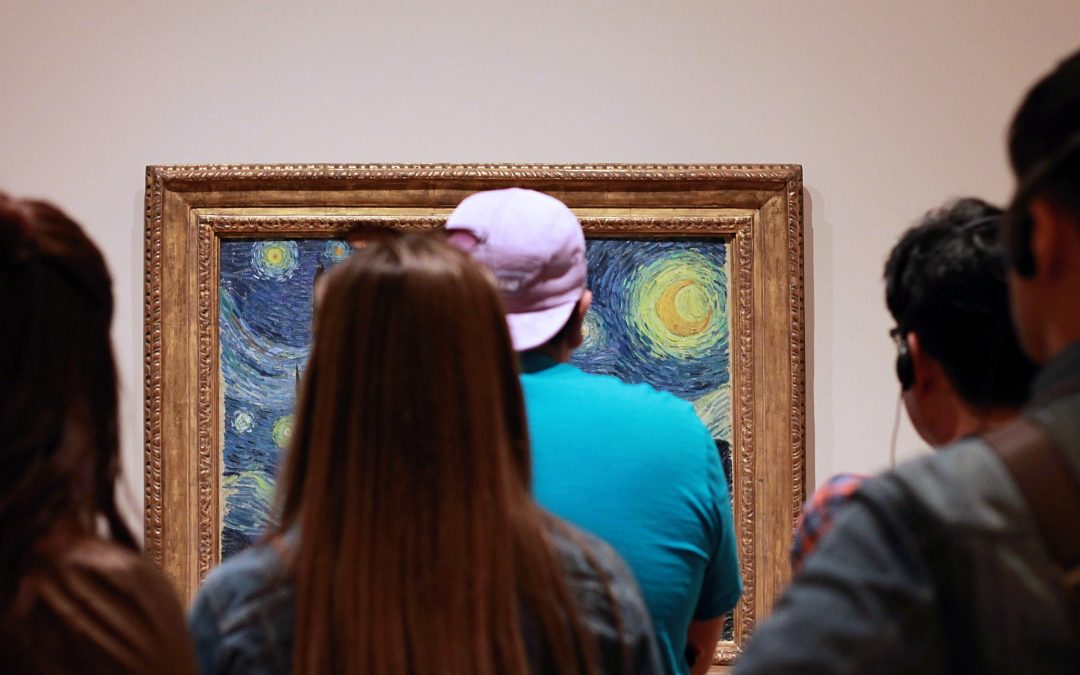
by BCB Property Management | May 20, 2016 | History, New York City
The Metropolitan Museum of Art, known colloquially as the Met, is the largest art museum in the United States and one of the most visited in the world. With a permanent collection of over two million art works, the nearly century and a half-old museum’s secrets are as rich as its history.
The best way to learn about the Met is to visit and take a tour. Tour guides spend day in and day out exploring and touring the majestic space, understanding its evolution, and become acquainted with the timeless objects curated with care throughout its many galleries.
Here are 14 amazing and surprising facts about the Metropolitan Museum of Art straight from the individuals that know it best: New York City’s tour guide experts.
1. The Met is the brainchild of a Founding Father’s grandson, and many other prominent New York figures.
According to @Discovering_NYC, a writer, historian and NYC tour guide popular on Twitter, the idea for the Met came from John Jay, the grandson of lesser-known Founding Father, also named John Jay.
In 1869, a committee of 300 met in 1869 to organize the museum, including many prominent New Yorkers involved with its creation: Andrew Haswell Green, John La Farge, James Lenox, Frederick Law Olmsted, Alexander Stewart and Rutherfurd Stuyvesant, to name a few.
2. The Met was not always located in Central Park.
The Met’s first location was in the Dodworth building at 681 5th Avenue, a simple brownstone building, then in a mansion at 128 W 14th street. The Central Park location was secured in 1969 thanks to cooperation from the Central Park Commissioners (many of whom were involved with the Museum) and opened in 1880.
3. The original red Gothic building is still visible if you to know where to look.
The original red Gothic building was designed by Calvert Vaux and Jacob Wrey Mould. It still stands, and one great view is from the European Sculpture Court, according to Discovering_NYC.
Since the Met expanded outward, the building can be seen at its center, which is called Medieval Court. “The Met is like a giant onion; they just keep building more stuff onto it,” says Museum Hack, a leading provider of fun, unconventional tours at the Met and other museums. The 1880 building is totally encased, and the best places to spot it is in the Petrie Court Sculpture Gallery and the Lehman Wing.
4. Since the first collection opened, objects have risen in number from less than 200 to 2 million. That’s an average of over 13,000 new artworks every year.
The first collection opened on February 20th, 1872, before the Met had its permanent home, including just 174 paintings and a few sculptures. Now, it contains two million objects celebrating mankind’s artistic endeavors spanning a quarter of a mile and 20 buildings.
5. The Museum’s front facade has been incomplete for over a century.
One of the numerous additions to the original building, the magnificent facade facing 5th Avenue was built in 1895, designed by Richard Morris Hunt, one of the founders of the American Institute of Architects. Hunt’s design included four columns supporting allegorical statues of architecture, sculpture, music and painting, but they were never finished because the funds didn’t allow for it. (Discovering_NYC).
6. The Met includes a beautiful uptown complex called The Cloisters.
Not everyone knows that there is more to the Met than its on-site art collections. Situated in Fort Tryon Park, the complex includes five Medieval cloisters and an incredible collection of Medieval art. John D. Rockefeller bought the collection for the Met, and also purchased land on the side of the Palisades to preserve the magnificent view. (Discovering_NYC)
7. The best bathrooms are in Gallery 207, not the Egyptian Wing.
According to Museum Hack’s insider knowledge, the bathrooms in the Egyptian Wing can be “packed and smelly.” To avoid this, take the Grand Staircase and high-tail it to Asian Art, where the Gallery 207 bathrooms are impressive, crowd-free and nice-smelling.
8. Use the 81st street entrance for shorter lines, pre-admission bathrooms, and your own private gift shop.
The main entrance on 82nd Street can be a madhouse, with long waits for coat check and admission. But if you simply stroll down to 81st and use the Uris Center for Education Entrance, Museum Hack attests, there will be shorter lines, a separate coat-check, pre-admission bathrooms and a private gift shop.
9. With over six million visitors each year, it is always crowded — but there are a few quiet spots.
Though the museum is almost always full of people, there are some somewhat secluded galleries if one is seeking a contemplative spot, says NYC Licensed Sightseeing Guide Robin Garr says, who also works for the private tour group The Levys’ Unique New York.
These include the Astor Chinese Garden Court, where you’ll find a replica of a Ming Dynasty garden from Suzhou (2nd floor, Asian Art galleries); the Henry R. Luce Center for the Study of American Art featuring 10,000 American decorative and fine art objects in open storage cases (2nd floor of American Wing); and the 20 historic-period rooms in the American Wing.
10. The Met holds the largest collections of arms and armor in the Western Hemisphere.
Created within the museum in 1912, the collection comprises roughly 14,000 objects, of which more than 5,000 are European, 2,000 are from the Near East, and 4,000 from the Far East.
The first curator of the Arms and Armor department was, rather fittingly, a man named Helmut Nickel, Robin Garr says.
11. The museum’s first accessioned object was a Roman sarcophagus, currently on display in the Greek and Roman Galleries.
A sarcophagus, which means “flesh-eater” in Greek, is an ancient Roman burial practice and art form by which elaborate designs are carved into limestone and marble containers. The Met’s Roman sarcophagus was a gift from J. Abdo Debbas, the American vice-consul at Tarsus (Southern Turkey) in 1870. It remains a centerpiece of the galleries of Greek and Roman art, says Garr.
12. The Met’s Egyptian collection holds the largest collection of Egyptian art outside of Cairo, and the oldest items in the museum.
Mostly from private collectors, the Met is home to over 26,000 pieces of Egyptian art from the Paleolithic era to the Roman era, second only to Cairo in quantity. The oldest items in the museum are a set of Acheulean flints in this collection, which date from the Lower Paleolithic period — between 300,000 and 75,00 BC!
Notable artworks also include the Temple of Dendur, a stunning Egyptian temple built by the Roman governor Petronius in 15 AD. A gift from Egypt to the USA in 1965, the temple is illuminated in a sky-lit room with a pool meant to evoke the Nile river. (Robin Garr)
13. There is a resident florist at the Met that arranges humongous floral displays.
You may see some beautiful floral arrangements during your visit to the met. According to Garr, the floral displays in the Great Hall niches were permanently endowed by Lila Acheson Wallace (co-founder and co-chairman of Reader’s Digest).
There is also a resident florist for the Met: “Floral Curator” Remco van Vliet is a third generation master Dutch florist. Floral arrangements are comprised of fresh, seasonal vegetation and can be as tall as ten to twelve feet.
14. You can’t see the Met in one visit.
At two million square feet, it’s impossible to see everything the Met has to offer in just one day. Many visitors make the mistake of winging it only to miss the best parts because they didn’t plan properly.
Robin Garr suggests that visitors pick a few favorite objects, two periods of art, or two geographical/cultural areas they would like to see. Prioritize the ones that are most important, but don’t spread yourself too thin or you’ll be unlikely to enjoy the experience.
If it wasn’t already clear that they know the Met inside out, it goes without saying that a knowledgeable guide can help you make the most of your day or days at the Met, and share even more pearls of wisdom along the way.
Check out Discovering_NYC, Museum Hacks, Robin Garr and The Levys’ Unique New York for more of insight likely to escape regular visitors.
Featured image: Steven Pisano via Flickr
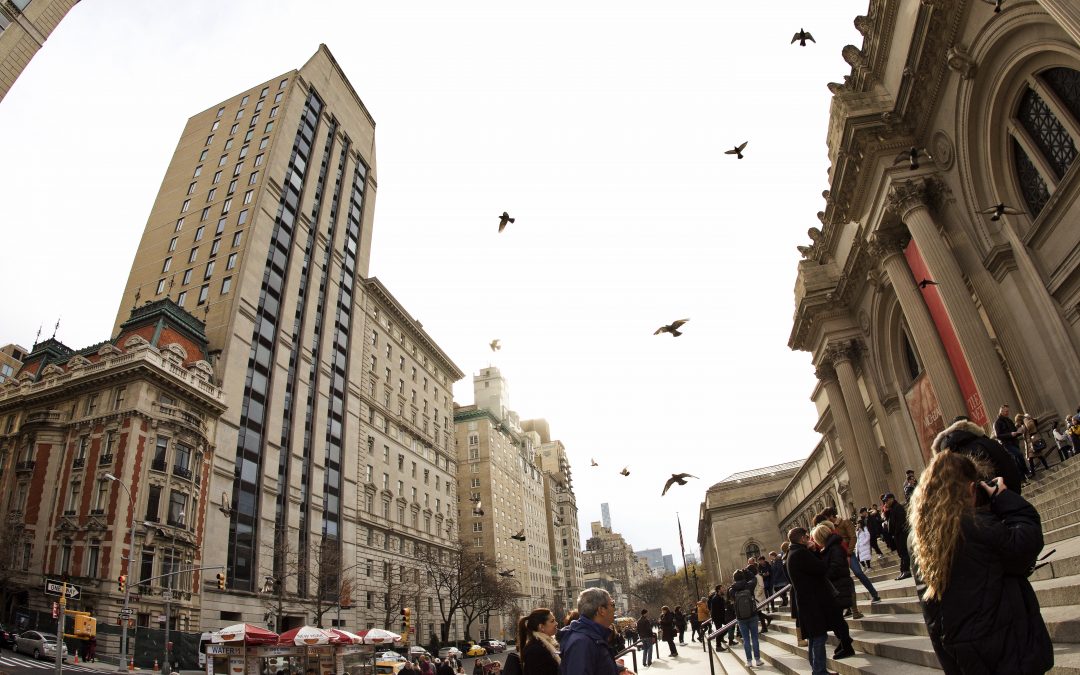
by BCB Property Management | May 11, 2016 | History, New York City
For about a decade, plans have been in the works to build a skyscraper adjacent to the Museum of Modern Art in Manhattan. Construction began in 2015 for the 1,050-foot tower, which will add to New York City’s skyline a two-peaked, 82-floor skyscraper designed by renowned architect Jean Nouvel.
The project, first called the MoMa Expansion Tower, Tower Verre and ultimately 53W53, will be the latest transformation to the area literally built upon the MoMA’s place and history in New York City. The 17,000-foot lot was sold by the MoMa to the real estate company Hines in 2007, and will be nearly the size of the Empire State Building.
Birth of a museum
Though 53 West 53rd will soon be topped by a graceful and angular monolith, the lot would have been virtually unrecognizable at the time of the MoMA’s first occupancy on the block in 1939. (Though opened in 1929, the MoMA tested various locations before settling where it remains today.)
Still, the property was impressive for the time, designed in the “International Style” by modernist architects Philip L Goodwin and Edward Durell Stone. The multi-departmental structure devoted floors upon floors to various forms of modern art, adding departments for architecture and design, film and video, and photography to its existing collections of paintings, sculptures, drawings, and illustrated books.
The property underwent several renovations in the 50s and 60s; in 1958, a second-floor fire caused by smoking construction workers destroyed an 18-foot long Monet painting of water lilies, among other works.
Bold changes
The MoMA has undergone various expansions leading up to its latest vertical endeavor. In 1983 it doubled its gallery space and increased curation space by 30 percent, adding an auditorium, two restaurants, and a bookstore.
In 1997, Japanese architect Yoshio Taniguchi won the honor of redesigning the space: the project, completed in 2004, doubled the space with an additional 630,000 feet of space, expanding the scope of its educational and research abilities. Taniguchi’s renovation was overall considered a fine example of contemporary architecture.
Now, with the addition of 53W53, the MoMA will be changing its face once more. After acquiring the American Folk Art Museum, MoMA unveiled new plans by Diller Scofidio + Renfro to transform the space into a MoMA addition instead of demolishing it. The renovation will include a retractable glass wall, new gallery space, and free access to the first floor, including the sculpture garden.
This latest facelift coincides with the continued construction of 53W53; it will add 15,500 feet of space in the former Folk Art Museum, plus 39,000 in the new tower. Along with gallery space, the visually impressive skyscraper will include apartments of various sizes and hotel rooms.
It is expected to be completed by 2018.






